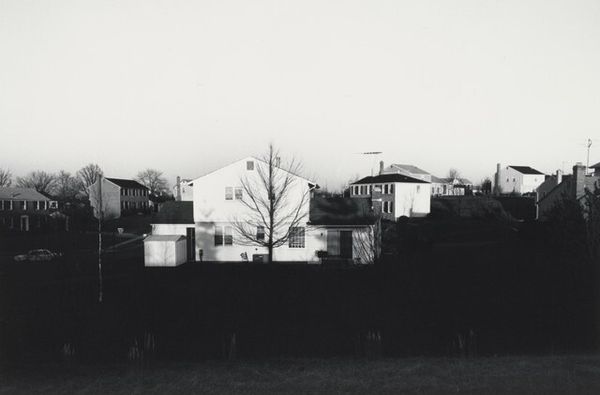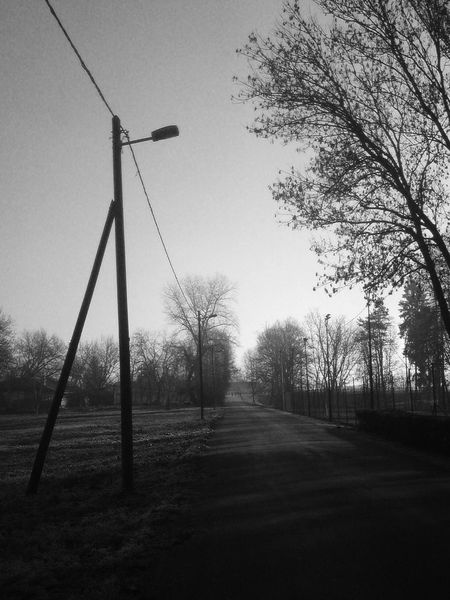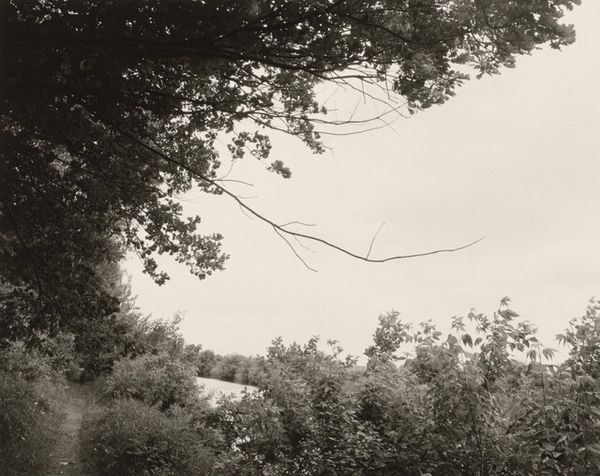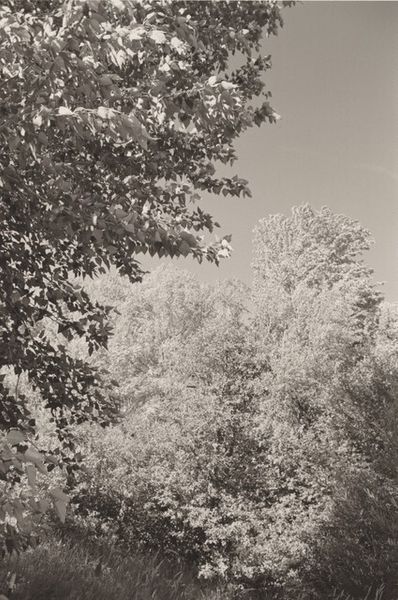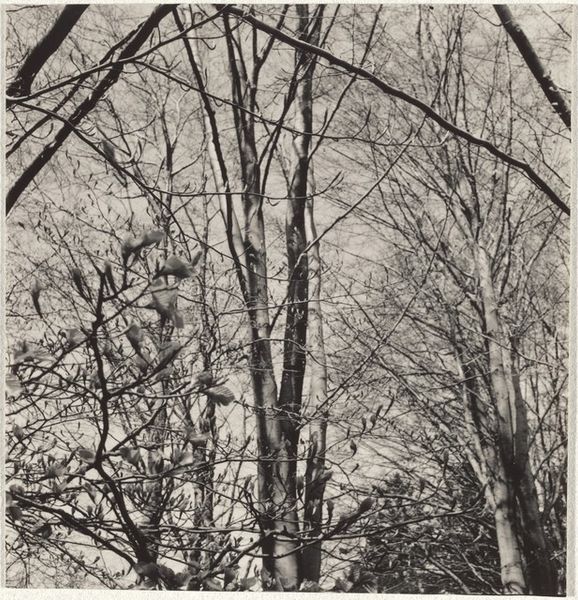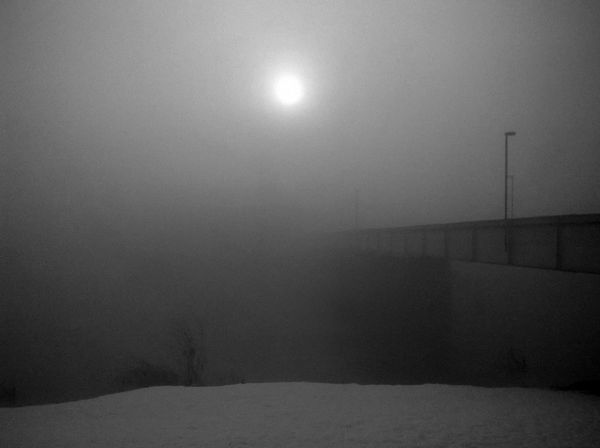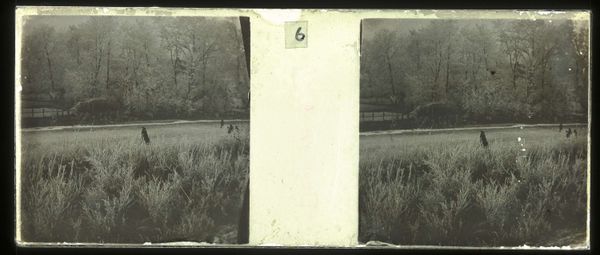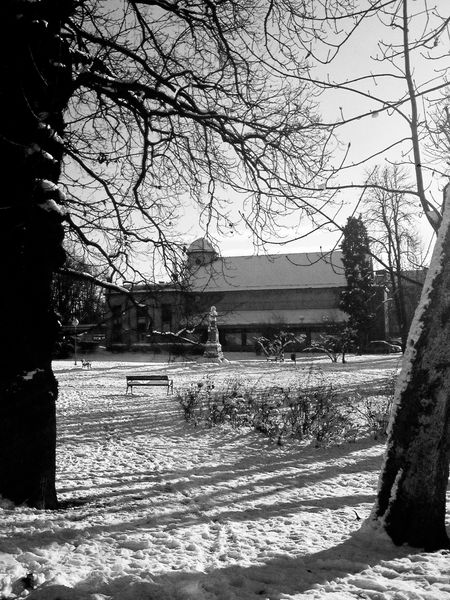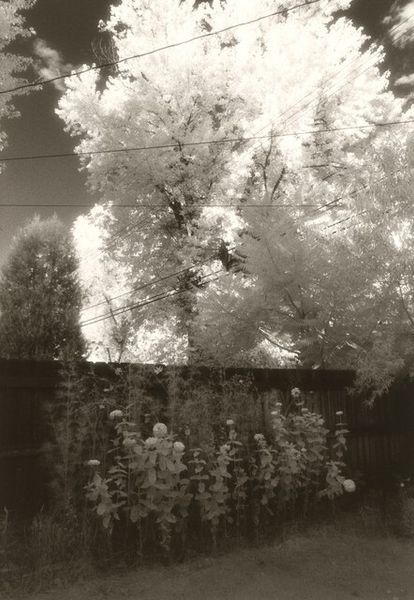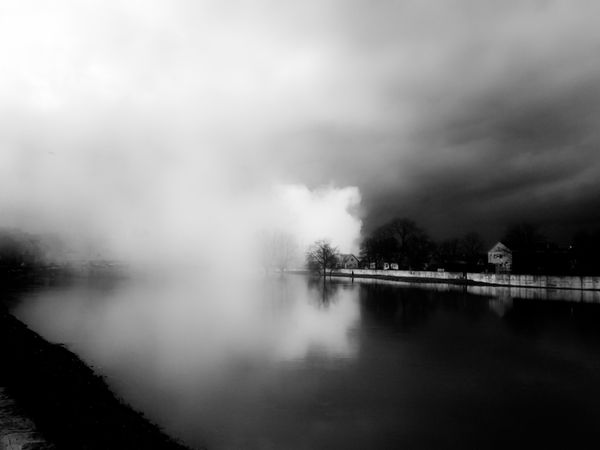
photography, architecture
#
landscape
#
photography
#
cityscape
#
architecture
#
monochrome
Copyright: Creative Commons NonCommercial
Editor: This intriguing monochrome photograph, "At the Edison Cinema" by Alfred Freddy Krupa, captured in 2017, evokes a sense of stillness. The sunlight peeking through the distant trees contrasts sharply with the imposing architecture in the foreground. What stands out to you in this piece? Curator: Immediately, I'm drawn to the materiality captured here. The photograph, a physical object produced through specific chemical and mechanical processes, mediates our view. Consider the labor involved in architectural photography – the selection of vantage points, the specialized equipment used, the post-processing. Editor: That's interesting. I hadn't considered the labor aspect so explicitly. Curator: The monochrome palette strips away the distraction of color, forcing us to consider texture and form. Note how the grainy texture of the building's facade contrasts with the smooth glass of the window and the hazy distance. Each element involves the manipulation of raw materials into constructed objects. The glass reflecting the landscape reminds us of its manufacturing and the way it separates the exterior space with the interior one, wouldn't you agree? Editor: Absolutely, it’s like a constructed reality layering with the natural one. How would you position this within Krupa's broader practice, then? Curator: That demands an examination of Krupa’s overall approach to material engagement. Does he consistently utilize this high contrast monochrome to draw attention to the constructed nature of seeing, and question how photography manipulates the narrative? Exploring those themes becomes essential for critical appraisal. Editor: I see. I appreciate how you've shown me to view not just the image, but the act of image-making itself as a material and labor-intensive process. Curator: Precisely. The point isn't just what's depicted, but how it's been brought into being. By considering materials, labor, and social context, we engage critically with both the artwork and the culture that produced it.
Comments
No comments
Be the first to comment and join the conversation on the ultimate creative platform.
